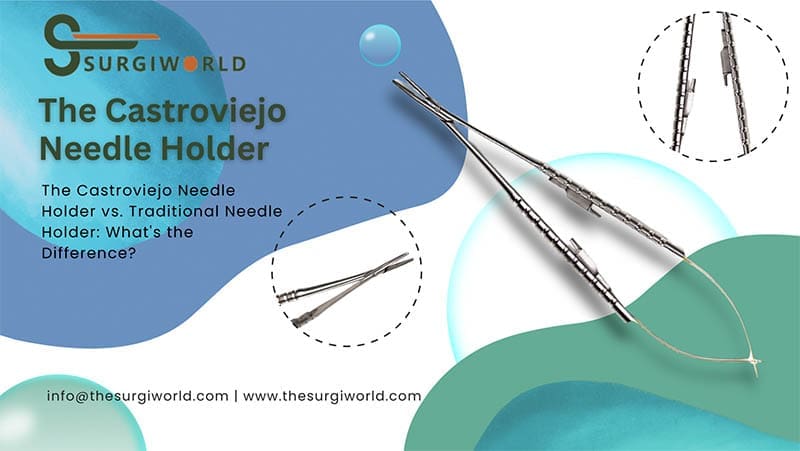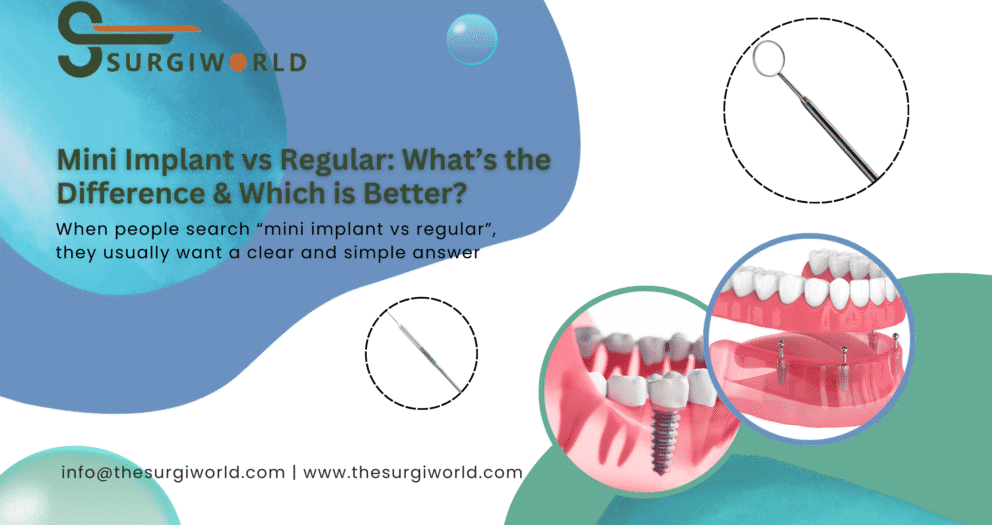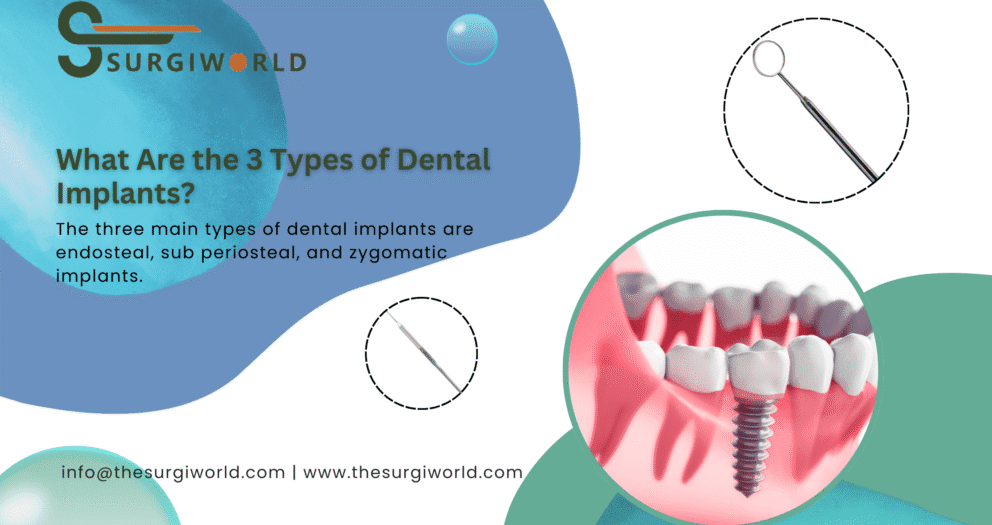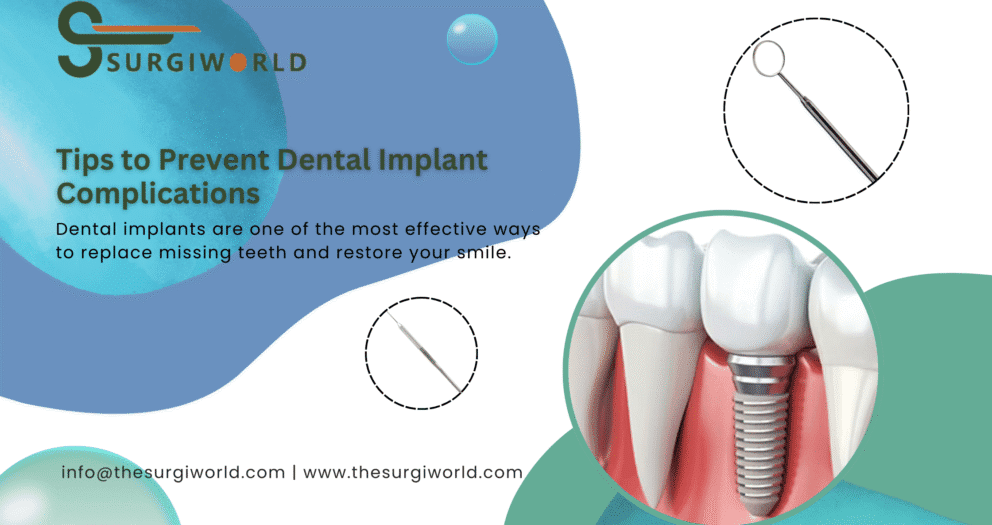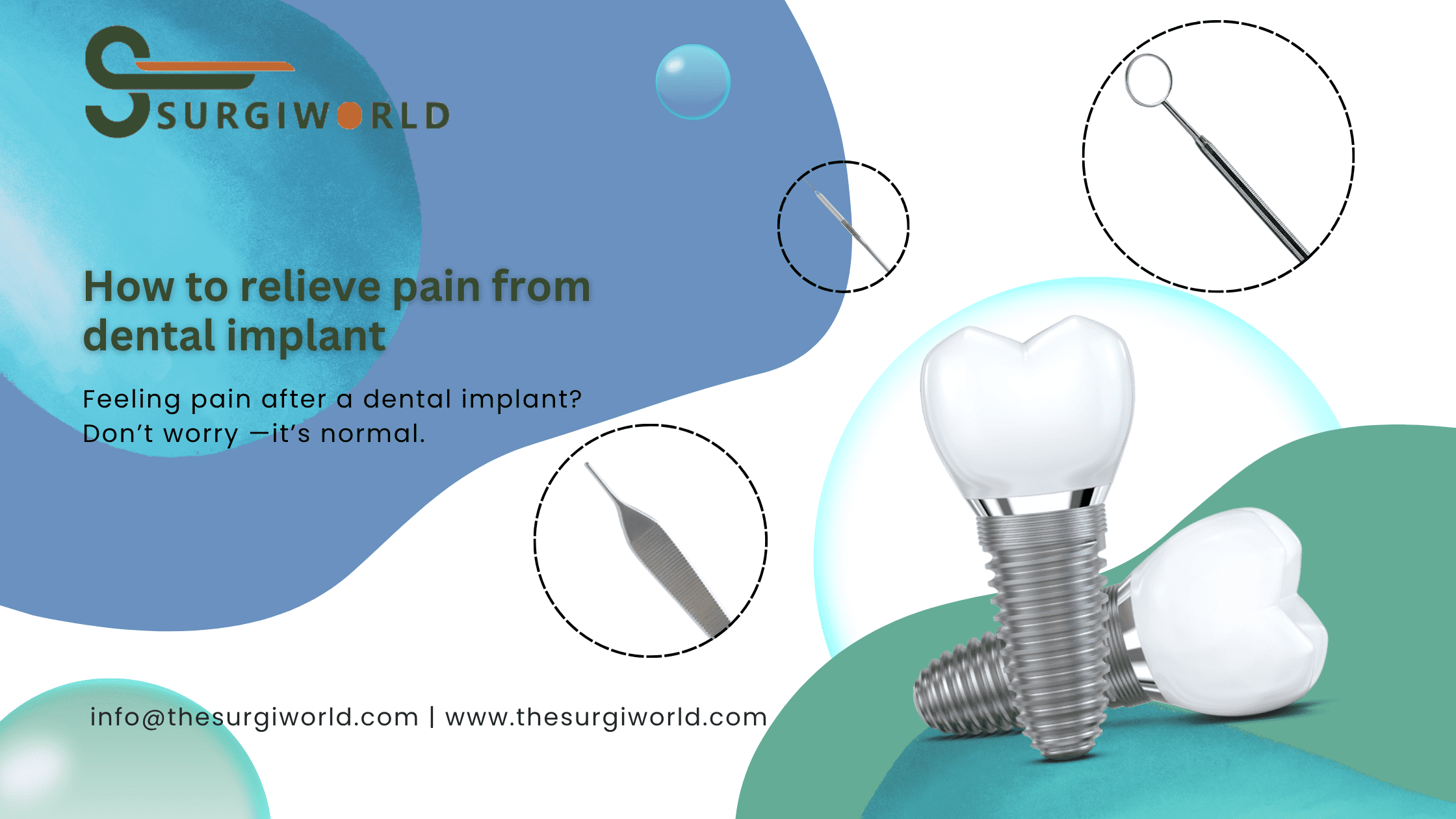When it comes to dental surgeries, precision isn’t just a nice-to-have; it’s absolutely essential. Whether you’re performing a simple suture or a delicate periodontal procedure, the right tools can make all the difference. Today, we’re diving into the nitty-gritty of needle holders—specifically comparing the Castroviejo Needle Holder to traditional needle holders. Spoiler alert: They each have their own unique strengths, but understanding their differences can help you make the best choice for your practice.
What is a Needle Holder?
Before we dig into the specifics, let’s establish what a needle holder is and why it’s a staple in dental surgery. Simply put, a needle holder is a surgical instrument designed to hold a needle steady while suturing tissues. Sounds straightforward, right? But in the world of dentistry, where precision is key, the design, grip, and control of a needle holder can significantly affect the outcome of a procedure.
Types of Needle Holders in Dentistry
There are several types of needle holders commonly used in dental practices. The Mayo-Hegar Needle Holder is a workhorse, versatile enough for general dental procedures. The Crile-Wood Needle Holder, on the other hand, is slightly more refined, often used for more delicate work. But when we start talking about precision, particularly in microsurgery or intricate suturing, the Castroviejo Needle Holder comes into the spotlight.
The Castroviejo Needle Holder: Designed for Precision
Design and Features
The Castroviejo Needle Holder is not your average tool. It was originally designed for ophthalmic surgery, which gives you a clue about its precision. The key features? Fine-tipped jaws, a spring-loaded handle, and a design that screams finesse. If you’ve ever struggled to place a suture exactly where you want it, you’ll appreciate how the Castroviejo feels like an extension of your hand.
Personally, I remember the first time I used a Castroviejo Needle Holder during a particularly challenging periodontal surgery. The difference in control was like night and day. The fine tips allowed me to maneuver in tight spaces, and the spring-loaded mechanism provided just the right amount of feedback. It was like going from driving a standard sedan to a high-performance sports car.
Applications in Dentistry
While it’s often associated with microsurgery, the Castroviejo Needle Holder isn’t just for the ultra-specialized procedures. It’s incredibly useful in periodontal surgeries, where precision is everything. The fine-tipped design makes it easier to work with delicate tissues, reducing the risk of trauma. Endodontic procedures also benefit from the Castroviejo’s precision, especially when suturing small, hard-to-reach areas.
Traditional Needle Holders: The Reliable Workhorses
Design and Features
Traditional needle holders like the Mayo-Hegar or Crile-Wood are solid, reliable, and versatile. They have broader jaws, a heavier feel, and typically use a ratchet-locking mechanism to hold the needle securely. These features make them well-suited for a variety of dental procedures, from routine extractions to more involved surgeries.
Applications in Dentistry
Traditional needle holders shine in situations where you need strength and stability over finesse. Think of them as the utility players in your dental instrument lineup. They’re great for general suturing, securing larger needles, and handling thicker tissues. Their versatility means you’ll find them in just about every dental practice, often as the go-to tool for day-to-day procedures.
Key Differences Between the Castroviejo and Traditional Needle Holders
Now that we’ve covered the basics, let’s get into what sets these tools apart. Understanding these differences can help you decide which needle holder is best suited for your specific needs.
Precision and Control
The most significant difference between the Castroviejo and traditional needle holders is precision. The Castroviejo is designed for fine work. Its slender, fine-tipped jaws allow for precise placement of sutures, especially in tight or delicate areas. Traditional needle holders, with their broader jaws, are better for general use but can be cumbersome when working with fine sutures or in small spaces.
In my experience, switching to a Castroviejo Needle Holder during a microsurgical procedure felt like upgrading from a ballpoint pen to a fine-tipped marker. The level of control it offers is unmatched, particularly when working with delicate tissues or fine sutures.
Ergonomics and Handling
Another key difference is ergonomics. The Castroviejo features a spring-loaded handle, which provides a smooth, consistent feel and reduces hand fatigue during long procedures. Traditional needle holders, with their ratchet-locking mechanisms, can require more hand strength to operate, which can be tiring over time.
I remember a long day in the clinic where I had multiple surgeries lined up. The difference in hand fatigue between using a traditional needle holder in the morning and the Castroviejo in the afternoon was noticeable. By the end of the day, I was grateful for the Castroviejo’s ergonomic design, which helped keep my hands steady and reduced strain.
Versatility and Specialization
Traditional needle holders are versatile, making them suitable for a wide range of procedures. They’re the workhorses you can rely on for almost any situation. The Castroviejo, however, is more specialized. It excels in microsurgery, delicate suturing, and situations where precision is paramount. But this specialization can also be a limitation if you’re looking for an all-purpose tool.
If you run a practice that handles a variety of cases, traditional needle holders might be your primary go-to. But if you frequently perform detailed, precision-dependent surgeries, investing in a Castroviejo could significantly enhance your outcomes.
Durability and Maintenance
Durability and maintenance are also important factors. Traditional needle holders are generally robust and can withstand years of use with proper care. The Castroviejo Needle Holder, while durable, requires more careful handling due to its finer tips and more complex mechanism.
When I first invested in a Castroviejo, I learned quickly that proper care was key to maintaining its performance. The fine tips, while incredibly effective, are more susceptible to damage if mishandled. Ensuring proper sterilization and storage became a priority, but it was well worth it for the precision it offered.
Choosing the Right Needle Holder for Your Practice
So, how do you choose between the Castroviejo Needle Holder and a traditional one? It boils down to your specific needs, the types of procedures you perform, and personal preference.
Factors to Consider
- Procedure Type: If your work involves a lot of delicate or microsurgical procedures, the Castroviejo is a clear winner. For general dental surgeries, a traditional needle holder may be more practical.
- Comfort and Ergonomics: Consider how much time you spend suturing and how much hand fatigue is a factor. The Castroviejo’s ergonomic design is a big plus for long procedures.
- Budget: While the Castroviejo tends to be more expensive, it’s an investment in precision. Traditional needle holders are generally more affordable and versatile, making them a good option if you need a reliable, all-purpose tool.
Case Study: A Real-World Comparison
Let’s say you’re performing a simple extraction followed by suturing. A traditional needle holder will get the job done efficiently and effectively. However, if you’re performing a complex periodontal surgery where tissue preservation and precision suturing are critical, the Castroviejo Needle Holder can help you achieve better outcomes.
Conclusion
In the end, both the Castroviejo Needle Holder and traditional needle holders have their place in a dental practice. The Castroviejo offers unmatched precision and control, making it ideal for delicate procedures. Traditional needle holders, with their versatility and reliability, are indispensable for general dental work.
Choosing the right needle holder is about matching the tool to the task. Understanding the differences between these instruments allows you to make an informed decision that enhances your surgical outcomes and keeps your practice running smoothly.
So, whether you’re adding to your instrument collection or simply refining your toolkit, consider the specific needs of your practice and the types of procedures you perform. After all, the right tool can make all the difference in delivering the best possible care for your patients.

